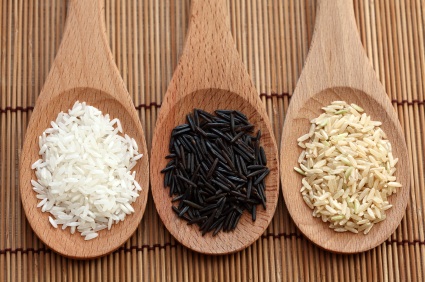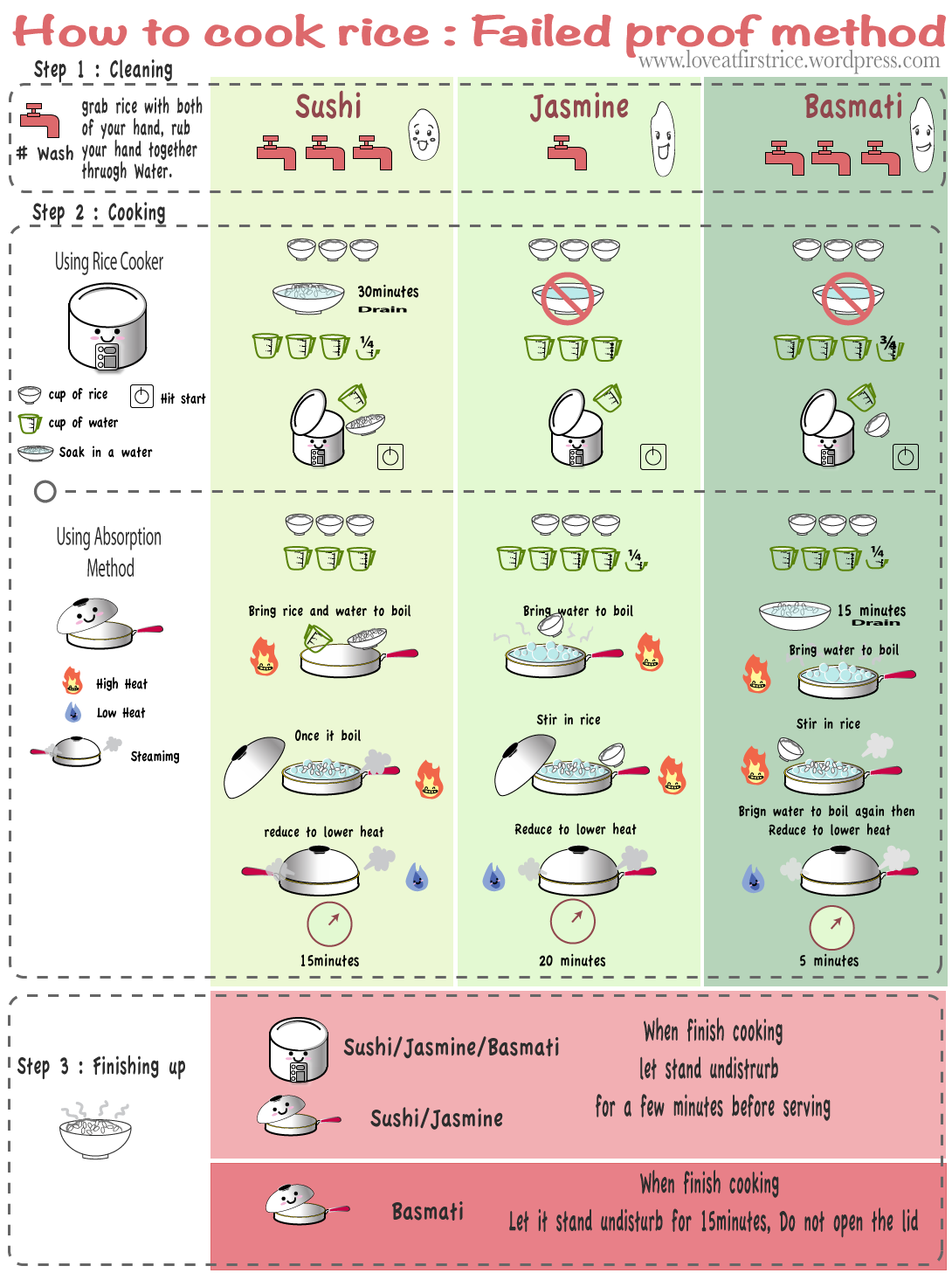Serves: 5

The other day we had one of those "yuck" dinners. Usually we buy Jasmine or Basmati Rice and this time we just picked up some store brand long grain white rice, because we couldn't get to the Asian Market where we get the HUGE bags of rice. Keep in mind that there is nothing wrong with store brand, or long grain rice, but we are a big rice eating family, and are picky. Different types of rice respond differently to cooking methods, which we will get into. This time, my store brand, long grain was not what we were used to when made in our rice cooker. (When I do chicken and rice casserole in the oven, this rice is awesome, so I will save it for that.)
Did you know?
Rice is the seed of the monocot plants Oryza sativa (Asian rice) or Oryza glaberrima (African rice). As a cereal grain, it is the most widely consumed staple food for a large part of the world's human population, especially in Asia and the West Indies. It is the grain with the second-highest worldwide production, after maize (corn).
There are three main sizes of rice, which is an easy way to classify the types.
Long grain is a classification for rice that is at least three times as long as it is wide. Think of long-grain white rice, like Carolina, or long-grain brown rice, like Uncle Ben's. Basmati and Jasmine, popular in Indian and Thai cuisine, are also long-grain varieties.
Medium grain rice is less than three times as long as it is wide. Risotto rices, like Arborio, Carnaroli, and Vialone Nano are considered medium grain, but are sometimes lumped together with short grain.
Short grain rice is less than twice as long as it is wide. Sushi rice is a good example of short-grain rice. (Though it can also be argued that some sushi rice, such as calrose and nigri are actually medium grain).
Best ways to cook: Long grain typically cooks best in boiling water, the water is typically doubled to the amount of rice being cooked. Always read package instructions for different types of rice for best results.
We typically cook rice in a rice cooker, which really does all the work for us. We find best results when we wash the rice first. To do this in our rice cooker, we add the desired amount of rice to the cooker bowl then add water to cover. We swish the rice and water around in the cooker bowl, and rub it around a little, then strain out the water, by just using our hand to prevent rice from falling out as it is dumped. Then we add the necessary water to cook.
Some Asian varieties may need different cooking methods, such as Japanese (Sushi) rice and sticky rice. Usually these varieties require steaming. I have cooked sushi rice in my rice cooker however when making sushi and it has turned out just fine.
Other tips about rice:

This Kitchen Remedy: Guide to Rice recipe is from the 2013 HomeCook'n Collection Cookbook. Download this Cookbook today.
"I must say this is the best recipe software I have ever owned."
-Rob
"Your DVO cookbook software saves me time and money!"
-Mary Ann
"Call it nutrition software, meal planning software, cooking software, recipe manager, or whatever you want. It is the software I use to stay healthy!"
-David
"Your software is the best recipe organizer and menu planner out there!"
-Toni
"Thank you so very much for creating such a wonderful cooking recipe program. I think this is the best recipe program there is!"
-Sarah
"I saw lots of recipe software for PC computers but I was having a hard time finding really good mac recipe software. I'm so glad I discovered Cook'n! It's so nice to have all my recipes in a computer recipe organizer. Cook'n has saved me so much time with meal planning and the recipe nutrition calculator is amazing!!!
-Jill
My favorite is the Cook'n Recipe App.
-Tom